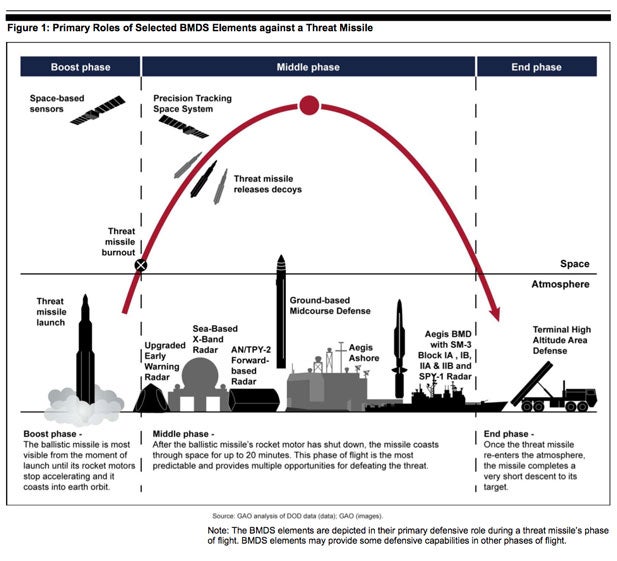You have no idea.
American network-centric surveillance capabilities are beyond the grasp of many a commoner or foreigner. They stretch from surface (land or water) to space around the world. A glimpse of it:
http://www.dote.osd.mil/pub/reports/FY2014/pdf/bmds/2014sensors.pdf
Let us consider the example of THAAD system. It is equipped with state-of-the-art AN/TPY-2 radar system. However, THAAD can accept cues from the AEGIS BMD Combat System, as well as from satellites and other external sensors (including JLENS) to further extend the battle space and defended area covered. THAAD can also operate in concert with the lower-tier missile defense systems such as PAC-3 to provide increased levels of effectiveness.
In short, if THAAD's own radar system fails to track at some point during the course of its flight, it will get the relevant information from another
asset and lock. This is the beauty of network-centric warfare.
More importantly, no missile can escape detection from American surveillance assets:
http://gizmodo.com/5989481/there-isnt-an-icbm-around-that-can-sneak-past-this-radar-array
So tracking is there and it has paved way for development of capability to intercept an ICBM out in the space during the mid-course phase of its flight, no matter how fast:
The Ground-Based Interceptor (GBI) is made up of a three-stage, solid fuel booster and an Exo-atmospheric Kill Vehicle (EKV). When launched, the booster missile carries the kill vehicle toward the target's predicted location in space. Once released from the booster, the 152 pound (69 kg) EKV uses data received in-flight from ground-based radars and its own on-board sensors to hit the incoming missile directly by ramming the warhead with a closing speed of approximately 15,000 mph (24,000 km/h).
Source:
http://www.fi-aeroweb.com/Defense/Ground-Based-Midcourse-Defense.html
Live intercept of an ICBM in outer-space:
http://www.boeing.com/features/2014/08/bds-gmd-test-08-19-14.page
Now that is the speed of the interceptor and you know that an interceptor is not supposed to chase a target from behind; interceptor closes-in from a different angle and timing is the key. So if an interceptor is that fast, missile tracking ability is noticeably above that speed limit.
Flight speed of 7 km/s is average for an ICBM; tracking limit is likely to be around 10 km/s (or above that) for the most powerful radar systems out there.














